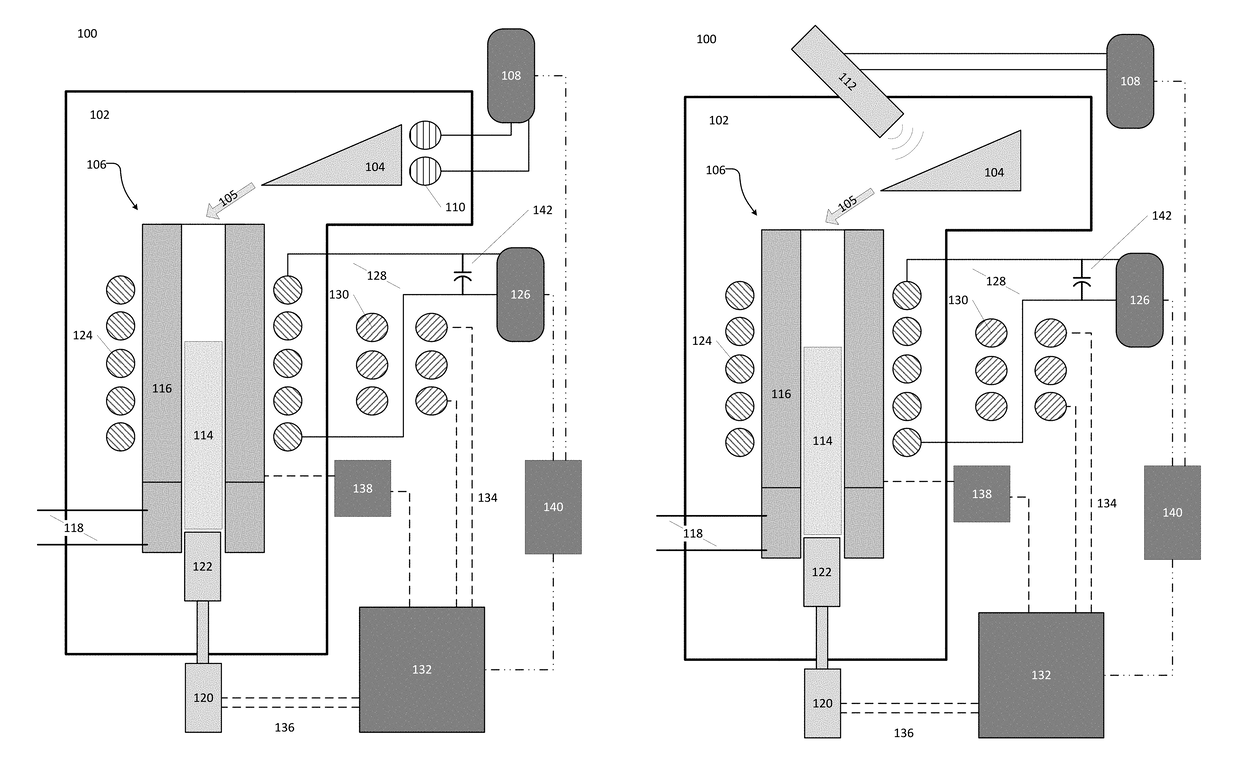Method and system for sensing ingot position in reduced cross-sectional area molds
a technology of cross-sectional area and sensing system, which is applied in the direction of ingot casting plant, manufacturing tools, casting plants, etc., can solve the problems of visual monitoring and subsequent control of the ingot position within the mold, and achieve the effects of small or reduced cross-sectional dimension, high quality, and high quality
- Summary
- Abstract
- Description
- Claims
- Application Information
AI Technical Summary
Benefits of technology
Problems solved by technology
Method used
Image
Examples
Embodiment Construction
[0019]Throughout this description for the purposes of explanation, numerous specific details are set forth in order to provide a thorough understanding of the many embodiments disclosed herein. It will be apparent, however, to one skilled in the art that the many embodiments may be practiced without some of these specific details. In other instances, known structures and devices are shown in diagram or schematic form to avoid obscuring the underlying principles of the described embodiments.
[0020]The present disclosure relates to a system and method of determining the position of an ingot within a mold of a melting system, particularly a vacuum metallurgical melting furnace system, where the ingot cannot be readily observed due to the construction, configuration, and / or other design requirements of the mold as a part of the system. Exemplary embodiments provide a system and method, particularly including an inductive sensory system, for determining the position of an ingot within a s...
PUM
| Property | Measurement | Unit |
|---|---|---|
| area | aaaaa | aaaaa |
| diameter | aaaaa | aaaaa |
| diameter | aaaaa | aaaaa |
Abstract
Description
Claims
Application Information
 Login to View More
Login to View More - R&D
- Intellectual Property
- Life Sciences
- Materials
- Tech Scout
- Unparalleled Data Quality
- Higher Quality Content
- 60% Fewer Hallucinations
Browse by: Latest US Patents, China's latest patents, Technical Efficacy Thesaurus, Application Domain, Technology Topic, Popular Technical Reports.
© 2025 PatSnap. All rights reserved.Legal|Privacy policy|Modern Slavery Act Transparency Statement|Sitemap|About US| Contact US: help@patsnap.com



